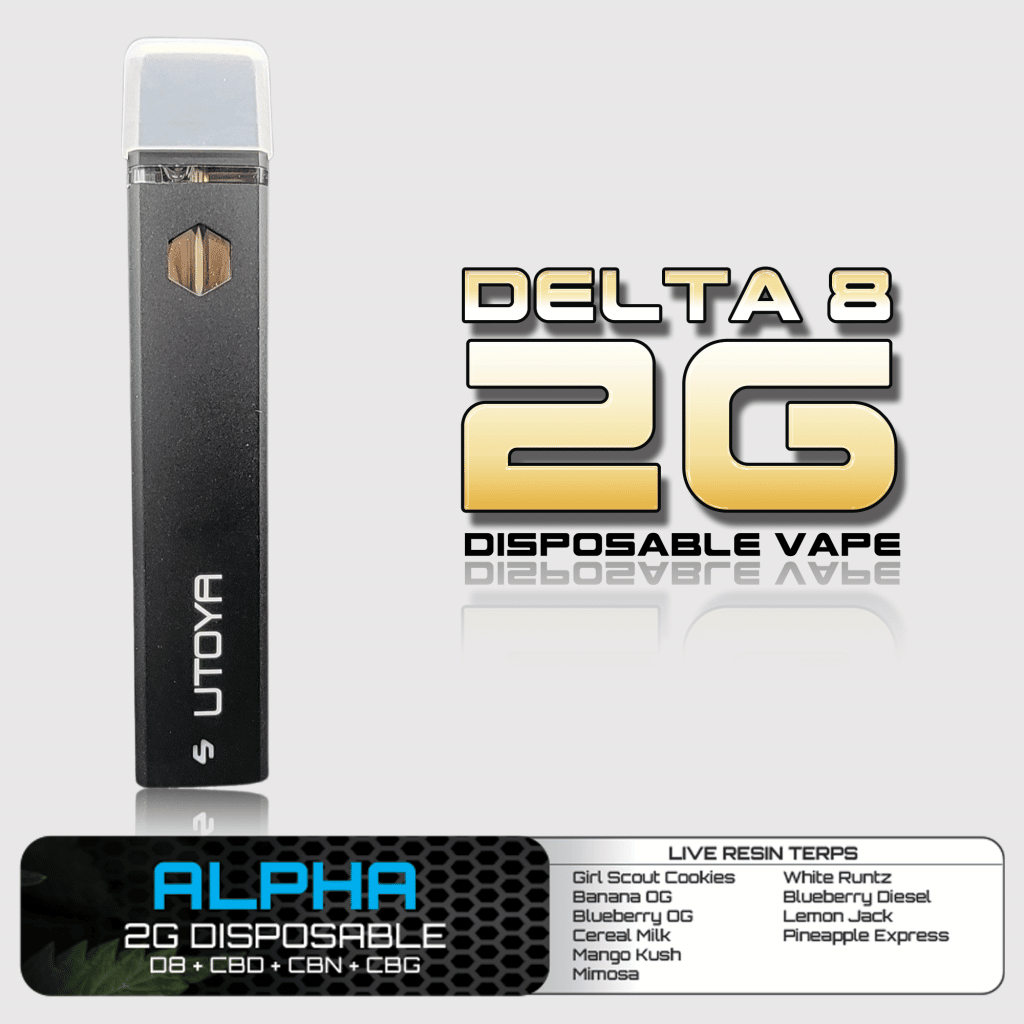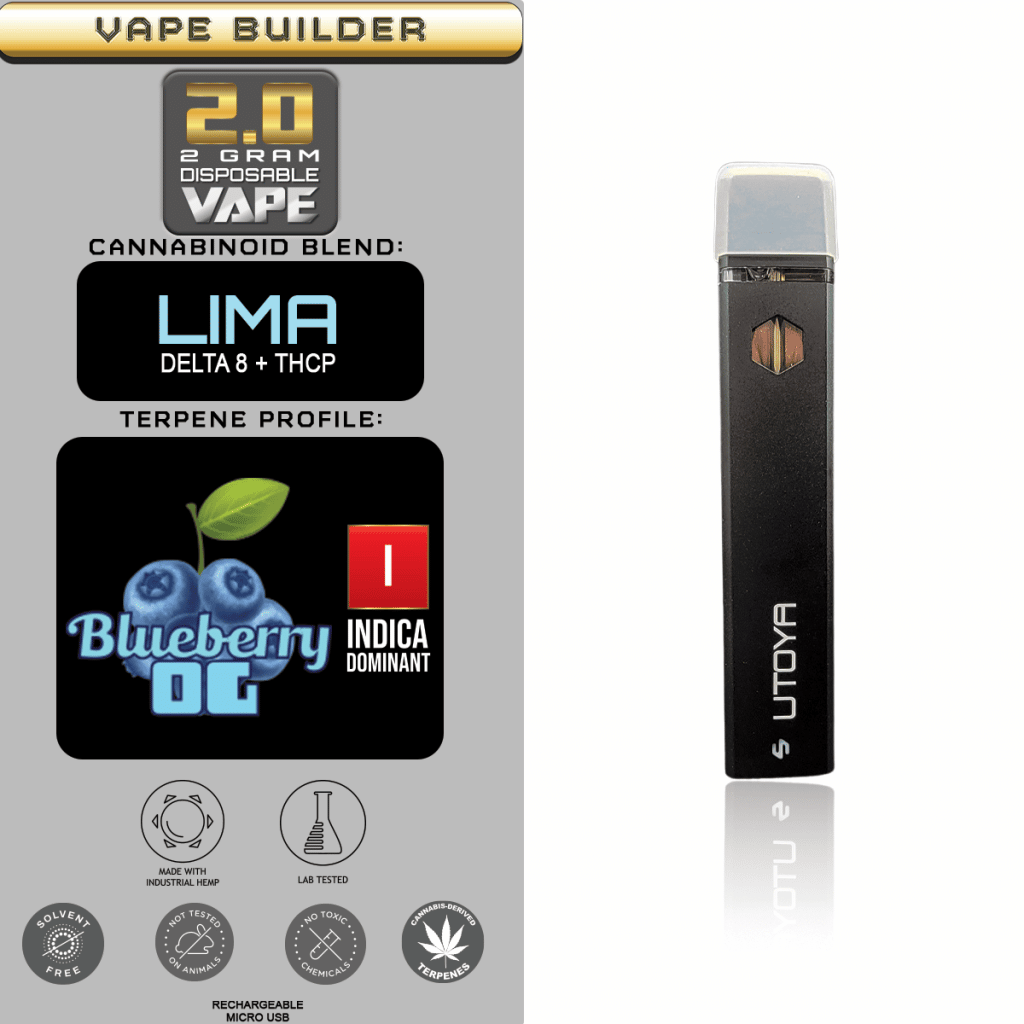How To Use a Disposable THC Vape Pen
Why a Disposable Vape Pen Is Nice To Have
Using a disposable THC vape pen can be a convenient and discreet way to consume cannabinoids. However, it’s important to know how to use it properly to ensure a safe and enjoyable experience.
Understanding Dosages
It’s important to pay attention to the dosage of THC in the vape pen. Disposable vape pens come in various strengths, so be sure to choose one that is appropriate for your desired level of effects. It’s always better to start low and work your way up to a higher dosage.
Utoya includes COAs on its vapes to keep things simple so you can always see what dosage you are getting.
Make Sure It's Fully Charged
First, make sure the vape pen is fully charged before use. Most disposable vape pens come with a built-in battery and are ready to use out of the box. However, if the pen has been sitting for a while or was not charged properly, it may need to be charged before use.
How to Properly Dispose a Disposable Vape Pen
Finally, always make sure to dispose of the vape pen properly. Many cities and towns have specific regulations for disposing of vape pens, so be sure to check with your local authorities for the best practice.
Expiration Dates
Pay attention to the expiration date of the vape pen. They are disposable products, and the oil inside can degrade over time, making them unsafe to use.
How To Use a Disposable THC Vape Pen
Utoya vape pens are operated simply by inhaling, however some disposable vape pens may have an activation button.
Once the pen is activated, take a slow and steady inhale. For Utoya’s disposable vape pens, there is no button, so simply take a slow and steady inhale.
The vapor will be drawn into your mouth, where you can hold it for a few seconds (3 – 4 seconds is perfect for most people) before exhaling. It’s important to start with small puffs, especially if you’re new to vaping THC, as the effects can be quite potent.
How to Declog or Unclog a Disposable Vape Pen Safely
In colder climates and with specific vape blends (HHC primarily), it is common for the cannabinoid distillates to harden, and as a result, become more difficult to vape. Here are some fast and easy solutions to fixing your clogged disposable vape pen.
How To Warm a Disposable Vape Safely
- The Miyagi Method : Rub your hands together quickly for a few moments, where the friction will cause your hands to warm. With your now warmer hands, take the vape and firmly grasp the vape where the distillate is seen. Hold for a few moments. To this a few times and it will warm some of the liquid
- The Puff It Till It Works Method: Take one slow (not inhaled) draw [like sucking milkshake through a straw when it's fresh, but more gently than that] for about 4 - 5 seconds. Then take quick, small, rapid succession puffs of the vape, like you were starting a hand-pipe full of pipe-tobacco back up, do about 5 - 10 of these, and finally, take one more 2 - 3 second non-inhaled draw for a final pull, and it should get the distillate into the chamber and able to be vaped.
- Hairdryer Method: Use a hairdryer, put it on heat, and set it to high heat. Get the hair dryer blowing hot air. Drop the speed on the hairdryer to low and reduce the heat to medium. For only about 10 seconds - 15 seconds, take the hairdryer in one hand, and the vape in the other, and aim the hairdyer at the vape. For optimal safety, wave the hairdryer back-and-forth quickly to create a spread-heat effect. This method is the most effective but also has the highest risk of causing damage to the disposable vape. When doing this method give your vape short bursts of exposure to the heat to ensure the least opportunity for damage to occur, and furthermore why waving the hairdryer is ideal.
Should I Use a Disposable THC Vape Pen?
In conclusion, using a disposable THC vape pen can be a convenient and discreet way to consume cannabinoids, but it’s important to know how to use it properly and pay attention to the dosage, expiration date and disposal of the vape pen. Always start with small puffs and work your way up to a higher dosage. And always follow the instructions and regulations provided by the manufacturer and local authorities.





